Zimbabwe
Zimbabwe, in long form the Republic of Zimbabwe, is a country located in southern Africa. Landlocked between the Zambezi and Limpopo rivers, the country is surrounded to the south by South Africa, Botswana to the west, Mozambique to the east and Zambia to the north. The capital, Harare, is located in the northeast and has the status of a city-province. 1.6 million inhabitants live there, 2.8 million with the urban area, out of the 14.2 million in the country, which has sixteen official languages including English, Shona and Ndebele as main languages. The currency was the Zimbabwe dollar until it was replaced by the US dollar and other currencies following the hyperinflation crisis in 2009. Since the 11th century, the Zimbabwean territory has been the site of several kingdoms as well as major routes for trade and migration. The British South Africa Company of Cecil Rhodes demarcated the current territory in the 1890s, which became the British colony of Southern Rhodesia in 1923. In 1965, the white minority unilaterally declared the independence of Rhodesia. The country endures a situation of diplomatic isolation and a 15-year guerrilla warfare against black nationalist and communist forces (ZANLA and ZIPRA) which ends with peace agreements leading to universal suffrage and internationally recognized independence on April 17, 1980 under the name of Zimbabwe, after the name of the medieval city of Great Zimbabwe. The country joined the Commonwealth then was suspended in 2002 for violation of international law by its government of the time, which officially decided to withdraw in December 2003. He is currently a candidate for reinstatement. The country is also a member of the United Nations, the Southern African Development Community, the African Union and the Common Market for Eastern and Southern Africa. It was once known as the “Jewel of Africa” for its prosperity.
Robert Mugabe became Prime Minister in 1980 when his ZANU-PF party won the elections following the end of the reign of the white minority, then he rose to the presidency in 1987 by transforming the parliamentary system into a presidential regime and remaining in power until 2017. Under his dictatorship, the state security apparatus dominates and is responsible for a widespread violation of human rights. Mugabe maintains the socialist rhetoric of the Cold War era to justify Zimbabwe’s economic difficulties by accusing Western capitalist countries of conspiracy. Contemporary African political leaders have long been reluctant to criticize Mugabe who was whitewashed by his anti-colonial positions, although the South African Archbishop Desmond Tutu called him “a caricature of the African dictator”. He was later criticized by several African political figures. The country has been in economic decline since the 1990s and is experiencing several crises, including hyperinflation.
Following a year of protest against the government and economic decline, the country suffered a coup on November 15, 2017, and Mugabe was arrested. After a large demonstration and several days of pressure from the army and his political entourage, Robert Mugabe officially resigned on November 21 with immediate effect even before the end of the dismissal procedure. Vice President Emmerson Mnangagwa succeeds him and wins the 2018 presidential election. The results are contested by the opposition, but the Zimbabwe Supreme Court finally confirms Mnangagwa’s victory, making him the new president elected after Mugabe. Zimbabwe’s gross domestic product was estimated at 13.91 billion U.S. dollars by The World Factbook in 2015, ranking it 141st on the list of countries by GDP. In 2018, Zimbabwe was ranked 156th out of 189 in the list of countries by human development index, making it one of the poorest and least developed in the world. Its unemployment rate is close to 90%, more than 72% of the population lives in poverty according to World Bank reports, 4.1 million people are food insecure in 2017 according to a report from the Food and Agriculture Organization of the United Nations, life expectancy is 60 years and external debt reaches 95% of GDP. The country receives aid from the World Food Program.
Zimbabwe ‘s history
First peoples of the territory
The presence of the first inhabitants in southern Africa, the San, has been attested for over 40,000 years and they are therefore the first inhabitants of the country. There is a large concentration of prehistoric pictorial works dating from 13,000 years BC in Zimbabwe. Later, around 500, arrived from Central Africa iron craftsmen and Bantu Gokomere farmers who settled on the site of the future National Monument of Great Zimbabwe, cradle of the Shona people, probably built between the ninth and thirteenth centuries. The Bantu forced the majority of the San ethnic group, nomadic people of southern Africa, to emigrate to the west or be enslaved during this same period. The city of Great Zimbabwe accommodates up to 10,000 or even 20,000 inhabitants and its social organization is structured around a monarchy, a ruling caste and an army. The influence of the Shona dynasty declined during the 15th century, notably due to overpopulation, the cause of disease, and the contestation of the power in place. The Torwa dynasty (en) moved to Khami and founded the kingdom of Butua, direct successor to Great Zimbabwe, in the middle of the 15th century. Other members from the Great Zimbabwe civilization, at the head of which King Mwene Mutapa, founded another Shona state further north: the Monomotapa Empire. This one prospers until 1629, date on which it is beaten by the Portuguese empire of which it becomes the vassal the same year.
Portuguese presence
The beginning of the sixteenth century saw the arrival of the Portuguese who took over the Rhodesian plateau through the Zambezi valley. In 1684, the Torwa dynasty was overthrown by the Changamire clan, which founded the Rozvi empire. In 1690, the Portuguese were finally expelled by Monomatapa troops. But the domain of the old empire is now limited to the Zambezi valley.
British colonization
In 1840, an Ndebele (or Matabele) military state, led by Mzilikazi of the Zulu Xumalo clan, was founded on the rubble of the Rozvi empire. In 1852, the kingdom of Mzilikazi was recognized by the Republic of South Africa. In 1854, explorer David Livingstone reached Victoria Falls. Then, in 1870-1880, the Shona and Ndebele territories were explored by Europeans including Frederick Courtney Selous and Thomas Baines. The year 1888 was marked by the Rudd concession, a treaty by which King Lobengula ceded the land between the Zambezi and Limpopo rivers to the British South Africa Company of Cecil Rhodes. In 1890, the pioneer column, set up by Cecil Rhodes, annexed the Mashonaland. Between 1893 and 1894, it was the First Ndebele War. The Ndebele are defeated on the Shangani and at Bembesi, but destroy the British patrol of Major Allan Wilson on the Shangani. Defeated, Lobengula fled and died in early 1894. In 1895, the territory, named “Rhodesia” in honor of Cecil Rhodes, was administered entirely by the BSAC.
British control
In 1901, an administrative division was created between the territories of the north of Zambezi, baptized Northern Rhodesia, and those in the south, baptized Southern Rhodesia. In 1923, the administration of BSAC ended. The integration of Southern Rhodesia into South Africa is a failure. The latter then takes the status of an autonomous colony. London retains control over the administration of Northern Rhodesia and Nyasaland. Between 1953 and 1963, the territory was part of the Federation of Rhodesia and Nyasaland grouping together Southern Rhodesia, Northern Rhodesia (present-day Zambia) and Nyasaland (present-day Malawi).
Independence
In 1964, the federation was dissolved. Northern Rhodesia, renamed Zambia, and Nyassaland, renamed Malawi, declare their independence. In 1965, the unilateral declaration of independence of Southern Rhodesia was decreed by the white government led by Ian Smith. In 1970, the Republic of Rhodesia was proclaimed.
In 1978, internal agreements were concluded between the Rhodesian government and moderate black nationalist movements for the establishment of a new assembly and a multiracial government. In 1979, the ephemeral state of Zimbabwe-Rhodesia was created and then reintegrated into the United Kingdom, before the Lancaster House agreements prepared for Zimbabwe’s independence and land redistribution after 10 years. Fearing a massive flight of capital, the new regime agrees to introduce into the Constitution an article protecting private property, especially land, as well as a clause prohibiting any modification of the fundamental law for a period of at least seven years, which which reassured the business community.
Mugabe era (1980-2017)
In 1980, fifteen years after Ian Smith’s unilateral declaration of independence, the British recognized the independence of Southern Rhodesia, which was named Zimbabwe, a member of the Commonwealth. Former guerrilla leader Robert Mugabe is the new Prime Minister. At the African level, the independence of Zimbabwe (ex-Southern Rhodesia) is late, for a country however vast, endowed with a fairly large population. The African National Union of Zimbabwe (ZANU) hands down the 1980 election. The evening of his victory, Robert Mugabe reassured the white population in a speech focused on appeasement and reconciliation. He even went beyond the Lancaster agreements: he renewed the heads of the intelligence services of the old regime, and appointed two white ministers. The emphasis is on education and health, sectors of which blacks had been almost entirely deprived under the regime of Ian Smith. In 1992, a World Bank study indicates that more than 500 health centers have been built since 1980. The percentage of children vaccinated increased from 25% in 1980 to 67% in 1988 and life expectancy increased from 55 to 59 years old. The enrollment rate increased by 232% a year after primary education was made free and the enrollment in secondary education increased by 33% in two years. These social policies lead to an increase in the debt ratio.
Between 1980 and 1983 a “civil war” took place between the two black nationalist movements ZANU (Shonas) and ZAPU (Matabélés and Ndébélés). Several laws were passed in the 1980s to try to reduce the wage gap. The differences, however, remained considerable. In 1988, the law gave women, at least in theory, rights identical to those of men. Previously, they could only take a few personal initiatives without the consent of their father or husband. In 1987, after an amendment to the constitution, Robert Mugabe became president of Zimbabwe on December 31. In the 1990s, several events accentuated the authoritarianism of the regime and the economic situation deteriorated significantly under the weight of international sanctions, leading the regime to accept a policy of “structural readjustment” advocated by the international financial institutions. This policy takes the form of a severe austerity cure: under duress, the government drastically reduces public spending and tens of thousands of civil servants lose their jobs. These unpopular reforms generate a wind of anger in the cities of the country won by unemployment.
In February 2000, the occupation of land by black peasants and veterans of the Revolutionary War increased. Some 4,500 owners then own more than a third of the cultivable land in the most fertile areas, in the form of large commercial farms, while more than 700,000 black peasant families share the rest on much less “communal land” to culture. The white owners had continued to enrich themselves during the twenty years following the fall of the segregationist regime, fueling the resentment of part of the black population in a context of economic crisis and rising unemployment. The Zimbabwean president, who had previously defended them, found it difficult to support the new opposition party, the Movement for Democratic Change. Overwhelmed by the land occupation movement, Mugabe tries to save face by formalizing the expropriations and settling on the requisitioned lands of those close to the regime, officially veterans of the war of independence. However, they do not have the knowledge or the equipment to cultivate their plots and a lot of land remains fallow. Tens of thousands of agricultural workers lose their jobs and production falls. Mugabe is disowned in a referendum on constitutional reform. In 2002, he won the presidential election in a contest whose honesty is disputed. In 2003, a serious agrarian and political crisis erupted following the expropriation by Mugabe of white farmers. A political crisis arises when opposition movements like the MDC are suppressed and elections rigged. Following an intensive campaign by human rights, British and opposition movements, the Commonwealth is imposing retaliatory measures against key Zimbabwe leaders. Within the Commonwealth, Mugabe nevertheless received the support of several African countries and denounced measures taken at the instigation of the “white” countries (Canada, Great Britain, Australia). Local opposition from the MDC is suppressed. In 2004, the country can no longer support itself and 70% of the population finds itself unemployed. Zimbabwe withdraws from the Commonwealth. The country is then on the verge of starvation, which the regime would seek to conceal. The country appears in the list of the new “axis of evil” renamed “outpost of tyranny” by Condoleezza Rice in 2005.
In 2005, Robert Mugabe’s party, ZANU, won the legislative elections against a backdrop of violence and electoral fraud in the face of a divided and weakened MDC. Between 120,000 and 1,500,000 inhabitants of the shantytowns of Harare, bastions of the opposition, were evicted in late spring when their homes were destroyed on the orders of the government; this is Operation Murambatsvina. Adoption of a constitutional reform restricting property rights and allowing the government to deprive anyone of a passport for reasons of “national interest”. In order to gain the support of the population, Mugabe persecutes the Ndebele minority. Many are fleeing to South Africa. Landowners are prevented from appealing their expropriation. A 66-member Senate is created, but it is suspected of being a simple recording chamber in the service of President Mugabe. Inflation exceeded 1,000% in 2006, and 100,000% in 2007. The exodus of the population to neighboring countries is accelerating. In 2008, the presidential and legislative elections of March 29 constitute a setback for ZANU. The MDC won the absolute majority of seats in the National Assembly (109 elected against 97 elected to ZANU). Released on May 2, the outcome of the presidential election is disputed. By officially obtaining almost 48% of the vote despite the fraud, Morgan Tsvangirai nevertheless outstripped Robert Mugabe (43%). During the campaign for the second round, the country was the scene of continuous political violence marked by atrocities committed by the police against members of the opposition and their families but also by the arrest of its main leaders. In this climate of terror, Morgan Tsvangirai decides five days from the second round of the presidential election to boycott it, thus allowing Robert Mugabe to be re-elected. Inflation exceeding 10 million% on an annual basis: the publication of 100 billion Zimbabwean dollars banknotes (around EUR 3 at the end of July 2008) is necessary. The population is forced to return to a barter economy and to walking: there is no more diesel to run the buses.
In addition, from August, a cholera epidemic raged in the country; according to the WHO, 2,971 people died, as well as 56,123 people infected (official figures as of January 27, 2009). Also according to WHO, up to half of the 12 million Zimbabweans are at risk of contracting the disease due to the unsanitary living conditions in the country. In 2009, due to pressure from the UN over fraud in the presidential election, Robert Mugabe decided to share power with his opponent and rival Morgan Tsvangirai, whose party is the Movement for Democratic Change (MDC). In April 2010, Mugabe received the President of Iran, Mahmoud Ahmadinejad, with whom he concluded eight trade agreements between the two countries. This visit is not well received by the opposition and by the rest of the world. On March 16, 2013, Zimbabwe adopted by referendum a new Constitution whose stated purpose is to moralize political life. President Robert Mugabe and his prime minister Morgan Tsvangirai call for a yes vote. The text plans to limit presidential prerogatives, but the head of state retains the power to appoint all important actors. Only the term of office has been reduced to two five-year terms.
November 2017 coup
Due to the advanced age of President Robert Mugabe, who turns 93 in February 2017, the issue of his succession has become an important issue in Zimbabwe’s political environment. Robert Mugabe reveals that he wishes to see his wife Grace Mugabe succeed him. He dismisses the ZANU-PF party and the government from the latter’s potential rivals. Grace Mugabe, known for her luxury tastes and her brutality, is however unpopular. On November 4, Robert Mugabe announced that he wanted his wife to become vice-president. On November 5, the latter asked him publicly to give him the presidency of the Republic directly. The dismissal of Vice-President Emmerson Mnangagwa, on November 6, 2017, thus aims to comfort the first lady, but displeases the armed forces. On November 15, 2017, General Sibusiso Moyo announced on national television that he would take over the streets in order to “eliminate criminals close to President Mugabe” and said that the army was not carrying out a coup against the government. Robert Mugabe and his wife Grace are placed under house arrest by the army. South Africa, worried about Robert Mugabe, sends two emissaries to meet his family and military officials. The African Union, the European Union and Nigeria are calling for peace. However, no sign of anarchy has been detected since. On November 16, 2017, Robert Mugabe continues to consider himself the only legitimate leader in Zimbabwe and refuses the mediation of the Catholic priest Fidelis Mukonori. However, on November 21, 2017, he resigned. Robert Mugabe’s presidential record is very negative. Leaving a ruined country, in which ZANU-PF has dominated all sectors of the country for several decades, he is also criticized for the violations of human rights and freedom of expression perpetrated under his regime.
Presidency of Emmerson Mnangagwa (since 2017)
Emmerson Mnangagwa returned to Zimbabwe on November 22, 2017 and said that “today we are witnessing the birth of a new democracy”. Emmerson Mnangagwa is designated as interim president and is to be sworn in within two days. The date of the oath was postponed to November 24, 2017. He retained his functions until the 2018 presidential election, during which he wore the colors of the Zanu-PF and was therefore the favorite candidate for his own succession. . He narrowly won the presidential election in the first round, amid suspicion of fraud. The start of 2019, against a backdrop of economic crisis and lack of democratic progress, was marked by violent demonstrations, which were severely repressed. In 2019, after a particularly bad agricultural season due to the drought, 2.5 million Zimbabweans are “on their way to starvation” according to the world food program. Like the rest of southern Africa, Zimbabwe has been subjected to recurrent droughts for several seasons, exacerbated by global warming, which affect food security for people and wildlife. In October, the UN estimates that 7.7 million people will be at risk of starvation in 2020.
Zimbabwe ‘s politics
Zimbabwe is officially a presidential republic, in which the right to vote is granted to all citizens over the age of 18. The president is both the head of state and the head of government. The regime of ex-president Robert Mugabe, who has been in power for almost 30 years, has been accused of serious human rights violations. His successor since November 2017, Emmerson Mnangagwa, imposed gently by the Zimbabwean army, maintains a repression of the opposition, especially since the country is facing a difficult economic situation: rationed electricity, shortage of petrol, shortage of drugs, shortage of basic products.
Land reform Caught between veterans of the liberation war and the opposition, President Mugabe had implemented an agrarian reform in the 2000s mainly targeting the country’s big farmers, specifically the white farmers who had been kept on their lands in independence time. Some landowners have tried to oppose the expropriation of their land by seizing the Southern African Development Community court, however the government rejects all accusations of discrimination by claiming that the redistributions of land aim to correct inequalities. Indeed, while the country’s independence dates back 20 years, about a third of the country’s land is in the possession of white farmers descended from settlers. Numerous violence punctuated the entire period of implementation of the land reform, causing at least 30 deaths. The government takes the party to stifle the legal consequences of this violence, in particular by forcing the resignation of Anthony Gubbay (en), president of the Supreme Court, after he had decided a case in favor of white farmers. Robert Mugabe and his party are facing accusations of international complicity, notably in the press, also by a court decision of a regional court for southern Africa in December 2008.
Land reform, combined with widespread corruption and patronage, have catastrophic consequences for the food situation in the country. After the rigged elections of 2002, the country is excluded from the Commonwealth. As a result of this event and the outcry that this policy has provoked in the world, the Zimbabwean authorities denounce a conspiracy of the “white countries” (in particular those of the Commonwealth, Canada, the United Kingdom, and Australia) . In 2005, there were still around 400 white farmers in Zimbabwe, out of 4,500 before the land reform. President Mugabe then expressed his wish to “drive them out” in the short term. In 2005, the ruling ZANU-PF party launched a campaign called “All White People Out in 2005”. In July 2007, Mugabe and his party, ZANU-PF, proposed to parliament that it pass a law prohibiting any merger, restructuring or acquisition of a business if 51% of its capital was not in the possession of black Zimbabweans. Then, in September 2008, an agreement with the MDC opposition backtracked somewhat on the confiscation of white farms, although the Minister of Justice said the contrary, that the agreement underlines the racist colonialist character of the previous distribution of land, and that no restitution would be made as such.
In December 2008, Zimbabwe rejected the judgment of the Southern African Development Community court, which found that the land confiscations carried out in Zimbabwe were discriminatory, racist and illegal and that the farmers should be compensated. In June 2011, under the provision for the enforcement of SADC court decisions in member countries, the Pretoria High Court in South Africa, seized by ex-expropriated Zimbabwean farmers, found that the property belonging to the Zimbabwean state in the country can be seized and put up for sale to compensate victims of expropriation. Pursuant to this decision, three properties of the Zimbabwean government in South Africa are seized for sale by public auction. In October 2017, Chris Mutsvangwa (fr), president of the Zimbabwe National Liberation War Veterans Association (ZNLWVA), an organization of blacks who had fought militarily against the Rhodesian regime, asked for the return of white expatriates and offered to take part in the next government , the G40 (in) (Generation 40) having, according to him, made the country a scorched earth.
Zimbabwe ‘s economy
Contemporary context
Until the early 1990s, Zimbabwe was the most industrialized country in southern Africa, after South Africa. In the late 1990s and early 2000s, the country experienced a terrible economic crisis, accompanied by hyper-inflation; during this same period, its manufacturing sector went from 27% to 15% of GNP. The “dollarization” of the economy, however, allows, from 2009, the revival of the economy. The country’s involvement in the war in the Democratic Republic of the Congo had economic motivations, in particular the desire to secure the debt contracted by the DRC towards the country and some, in Zimbabwe, made their fortune thanks to minerals from the Congo, of which, seems he, President Mnangagwa himself.
Agriculture
The agriculture sector suffered from a poorly distributed land distribution in 1999 and 2000. In 1996, 4,500 white farmers still owned around 30% of the country’s cultivable land (compared to 47% in 1980) cultivating wheat. , peanuts and tobacco and whose turnover represented more than 50% of the GDP. Nicknamed the bread basket of Africa, the country participated as a supplier of food to the World Food Program (WFP). Since then, through the expropriation of white farmers, half of this land has been fragmented or redistributed in spite of common sense to friends of the regime or to black farmers without the technical knowledge to manage farms. Many white people then emigrated to Australia, Zambia, South Africa or England. The country was among the top eight cotton producers in East, South and North Africa in the mid-2010s. It was also the seventh among African tea producers at the start of the decade 2010, dominated by Kenya.
Mining wealth
Zimbabwe is also a large mining country (gold, platinum, diamond, chrome). Exploitation with the help of private capital has collapsed, much of the exploitation is now clandestine. New diamond mines were discovered in 2006, the exploitation of which mainly and clandestinely benefits the forces of security, army and secret police. President Mugabe, for his part, sees in the reason for this economic crisis the sanctions imposed on the country by the United States and the European Union because of human rights abuses.
Inflation
Inflation was 32% in 1998, 59% in 1999, 208% in February 2002 of 1,042.9% in May 2006, and more than 100,000% in January 2008. The annual inflation rate (between July 2007 and July 2008) reached around 231,000,000%, this being considered no longer as inflation but as hyperinflation. On July 31, 2006, the government announced the revaluation of 99,000% of its currency. New denominations are then put into circulation and for three weeks, the two will run. This reassessment should not, however, put an end to the serious economic crisis, where the unemployment rate is around 70%. The rationale for this transaction is most likely purely cosmetic, suggesting that prices have fallen. For example, in a government television advertisement, a housewife announces that bread “now costs only $ 200” when it previously cost $ 200,000. Another reason is that for some transactions, computer systems could no longer handle excessively high figures. Zimbabwe broke a new inflation record in January 2007 at 1,593% on an annual basis, a few days after the announcement of the dismissal of the Minister of Finance, Herbert Murerwa, replaced by Samuel Mumbengegwi.
Inflation for the month of March 2007 would be 2,200%. In August 2007, 2 liters of cooking oil cost Zimbabwe dollars 400,000, about 2.8 US $ or 2 €. The US currency is officially traded for 252 ZWD but is worth nearly 100,000,000,000 ZWD on the black market (July 2008). In January 2008, the annual inflation rate reached a record 100,580.2% while the unemployment rate approached 80%. The Zimbabwean dollar having lost all its value, the exchanges are done more and more often in South African rand, in pula of Botswana or in American dollar. In July 2008, the annual inflation rate reached 231,000,000%. In January 2009, following too high inflation, the Zimbabwe dollar was abandoned and the official currency of Zimbabwe became the US dollar. Following this event, prices fell by 3.1% in one month.
Tourism
The tourism sector was also in crisis, and western tourists avoided the country, worried because of the expression of anti-white feelings. The government, however, intended to attract Chinese tourists, but they should hardly fill the void left by Western tourists. The tourism sector has been developing since 2011. The number of tourists and the associated revenues are increasing. In 2015, the country welcomed more than 2 million tourists and generated $ 886 million.
Zimbabwe ‘s demography
The country’s population is estimated at 14.55 million inhabitants in 2016, a tripling since 1960. Ravaged by AIDS, the epidemic has reduced life expectancy from the 1980s until the early 2000s before that this does not go up in the following years towards 60 years. The mortality rate rose to the high level of 17.9 per thousand, a level comparable to that of southern Africa (17 per thousand). The average number of children per woman, or short-term fertility indicator, is 3.15, corresponding to a birth rate of 27.7 per thousand. The rate of demographic growth is therefore slowed down to around 1% per year or 9.8 per thousand. At least 99% of the population is made up of black Africans, mainly linked to the Shona and Ndebele ethnic groups. There were 140,000 white people (called Rhodesians) in 1986, but the agrarian land takeover policy and the prevailing racism brought this number down to around 30,000 in 2013, mainly descendants of British, Afrikaner and Portuguese settlers.
Zimbabwe ‘s education
Since the 1980s, public authorities have maintained sustained efforts in the fight against illiteracy. Zimbabwe had an 88% literacy rate in 2014, according to a UNESCO report. The 2016-2020 Strategic Education Plan emphasizes the education of all children, taking particular account of communities and groups with significant vulnerabilities.
Zimbabwe ‘s language
The main languages are: English which is used nationally: 80% of the population speaks English or has some knowledge of English, ndebele, shona (or its close variant from the south, lozi) widely spoken, and for a long time the only ones to benefit from the status of “official languages”. However, the new 2013 Constitution now recognizes 16 official languages and adds to the first three: Kalanga, Ndau (or South Shona) languages actively supported in education; the chewa (or chichewa), the chitonga, the shangani (or tsonga), the tswana, the venda dispersed languages; Nambya and the Zimbabwean sign language developing minority languages; Chibarwe, Tsoa (or Tschwa, variant of Tswana) languages in danger of extinction; Khoisan, Northern Sotho and Xhosa other minority languages from border ethnic groups. Two other Bantu minority languages are used vigorously but are not recognized: Dombe (close to nambya recognized in Zimbabwe) and Kunda (closer to Nyungwe recognized in Mozambique than Chichewa recognized in Zimbabwe). A Bantu pidgin is also used as a secondary language. Lastly, Afrikaans is spoken by around 50,000 people, partly by whites, but also by blacks and mixed-race Zimbabweans (including 4,500 of native speakers), and Gujarati is spoken by around 19,000 people of Indian origin ( especially during the former British colonization).
-
Zimbabwe

Zimbabwean President Schedules Presidential & Parliamentary Polls On August 23
Zimbabwean President Emmerson Mnangagwa on Wednesday announced the presidential and parliamentary elections will be held on August 23, reported CGTN…
Read More » -
Zimbabwe
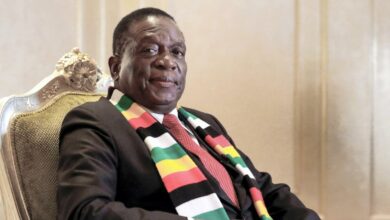
Zimbabwean President Mnangagwa Promises To Hold Free & Fair Elections This Year
Zimbabwean President Emmerson Mnangagwa on Tuesday promised to hold free and fair general elections in the country later this year…
Read More » -
Zimbabwe
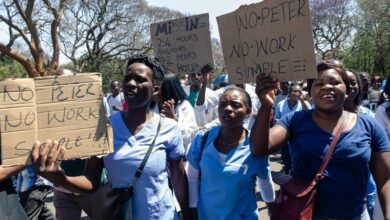
Zimbabwe Signs Bill Into Law That Curtails Striking Rights For Health Workers
Zimbabwe on Tuesday signed a bill into a law that banned organized protests by healthcare workers who could now face…
Read More » -
Zimbabwe

US Government Announces Sanctions Against Zimbabwe President’s Son
The United States (US) government has announced sanctions against Zimbabwe’s President Emmerson Mnangagwa’s son, Emmerson Mnangagwa Jr, ahead of a…
Read More » -
Zimbabwe

Zimbabwean President Mnangagwa Calls For Peace Ahead Of 2023 Election
Zimbabwean President Emmerson Mnangagwa on Wednesday called for peace as the country prepares for general elections, reported The Africa News.…
Read More » -
Senegal
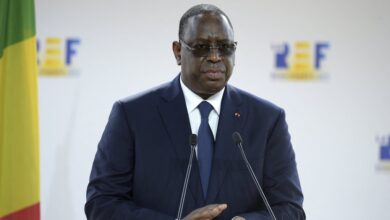
Senegalese President Sall Calls For Lifting Of Sanctions Against Zimbabwe
Senegalese President Macky Sall on Tuesday called for a lifting of sanctions against Zimbabwe in his address to the 77th…
Read More » -
Zimbabwe

WFP Plans A Food Relief Programme Targeting 700,000 Needy Zimbabweans
The United Nations World Food Programme (WFP) is planning to begin a food relief programme in Zimbabwe targeting 700,000 people…
Read More » -
Zimbabwe

Zimbabwe’s Healthcare Workers Go On Strike Over Wages, Inflation Crisis
Zimbabwe’s health workers went on a strike on Monday after rejecting the government’s 100% wage hike offer last week, demanding…
Read More » -
Zimbabwe
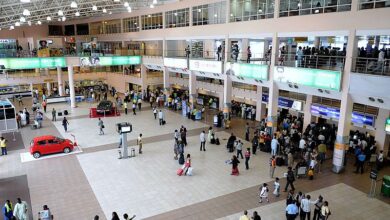
Zimbabwean Government Lifts Mandatory COVID-19 Tests For Travelers Entering Country
Zimbabwean Information Minister Monica Mutsvangwa on Tuesday announced the government has lifted the requirement of a negative PCR COVID-19 test…
Read More » -
Zimbabwe
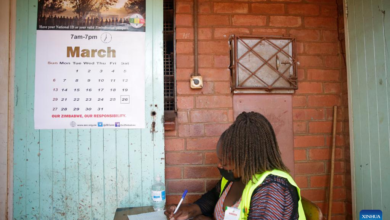
Zimbabwe’s By-Elections Marred By Intimidation, Vote-Buying, Election Observers Claim
Zimbabwe’s recently held by-elections were marred by intimidation and vote-buying, some independent election observers have found, reported The BBC. Zimbabwe’s…
Read More » -
Zimbabwe
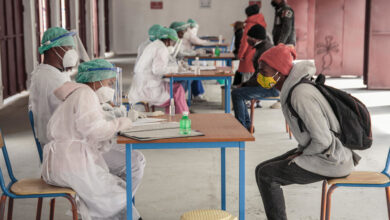
Zimbabwean Gov’t To Stop Paying To Staff Who Are Unvaccinated Against Covid-19
The Zimbabwean government on Tuesday announced that it will stop salaries to staff members who are unvaccinated against COVID-19, reported…
Read More » -
Zimbabwe

Zimbabwean Government Extends Lockdown Measures To Prevent Spread Of Omicron
The Zimbabwean government on Tuesday extended lockdown measures in the country for two weeks to prevent the spread of the…
Read More » -
Zimbabwe

Zimbabwean Gov’t To Begin Giving Booster COVID-19 Shots As Omicron Spreads Globally
The Zimbabwean government will begin giving COVID-19 booster shots to frontline health workers, the elderly, and people with chronic diseases,…
Read More » -
Zimbabwe

Zimbabwean Government Bars Unvaccinated Public Servants From Work As Deadline Ends
The Zimbabwean government has announced it will not allow unvaccinated employees to work from Monday following the lapse of the…
Read More » -
Zimbabwe

Zimbabwean Government Extends COVID-19 Lockdown Restrictions For Two Weeks
The Zimbabwean government on Tuesday announced the extension of Covid-19 lockdown restrictions in the country for another two weeks, reported…
Read More » -
Zimbabwe
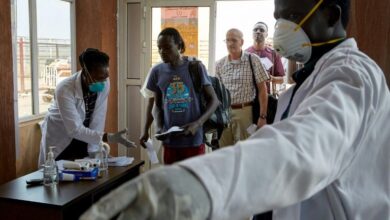
Zimbabwean Minister Tells Government Workers To Get Vaccine Or Quit
The Zimbabwean Justice Minister, Ziyambi Ziyambi, on Tuesday, said government workers who do not want to be vaccinated against COVID-19…
Read More » -
Zimbabwe

Zimbabwean Gov’t Extends COVID-19 Vaccination To Younger Age Groups
The Zimbabwean government on Wednesday extended the COVID-19 vaccination program to include the 14 to 17 year age group. Until…
Read More » -
Zimbabwe

Zimbabwe’s Government Approves J&J COVID-19 Vaccine For Emergency Use
Zimbabwe’s government on Wednesday approved the Johnson and Johnson COVID-19 vaccine for emergency use, after banning it earlier as the…
Read More » -
Zimbabwe
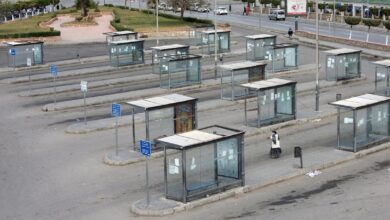
Zimbabwean Gov’t Maintains Level Four Lockdown Despite Decreasing Numbers
The Zimbabwean government on Tuesday said it has decided to maintain the strictest level-four lockdown in the country despite reporting…
Read More » -
Zimbabwe

Zimbabwean Vice President Confirms Detecting COVID-19 Indian Variant
Zimbabwean Vice President Constantino Chiwenga on Wednesday confirmed detection of the first cases of the new coronavirus variant that emerged…
Read More » -
Uncategorized
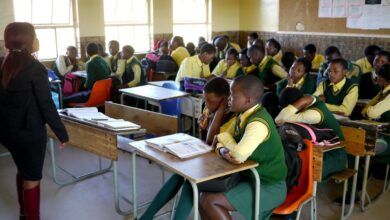
Zimbabwean Gov’t Intensifies COVID-19 Preventive Measures In Schools
Zimbabwean Information Minister Monica Mutsvangwa on Wednesday said the government is intensifying implementation of COVID-19 standard operating procedures in all…
Read More » -
Zimbabwe
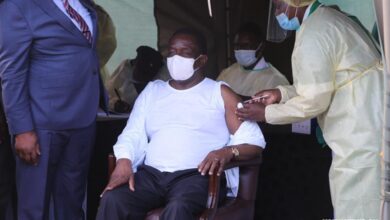
Zimbabwean President Mnangagwa Receives First Shot Of Sinovac COVID-19 Vaccine
Zimbabwean President Emmerson Mnangagwa on Wednesday received his first shot of the Chinese Sinovac COVID-19 vaccine, reported Reuters. He got…
Read More » -
Zimbabwe

Zimbabwean Vice President Kembo Mohadi Resigns Over Sexual Misconduct Allegations
Zimbabwean Vice President Kembo Mohadi resigned on Monday after local media reports accused him of improper conduct, including accusations of…
Read More » -
Zimbabwe

Zimbabwe Receives 200,000 Doses Of Sinopharm Coronavirus Vaccine From China
Zimbabwe on Monday received the first shipment of 200,000 doses of Sinopharm coronavirus vaccine, donated by the Chinese government, at…
Read More » -
Zimbabwe

Zimbabwean President Mnangagwa Thanks Chinese President For COVID-19 Vaccines
Zimbabwean President Emmerson Mnangagwa on Thursday thanked Chinese President Xi Jinping for assisting in the country’s fight against COVID-19 as…
Read More »

